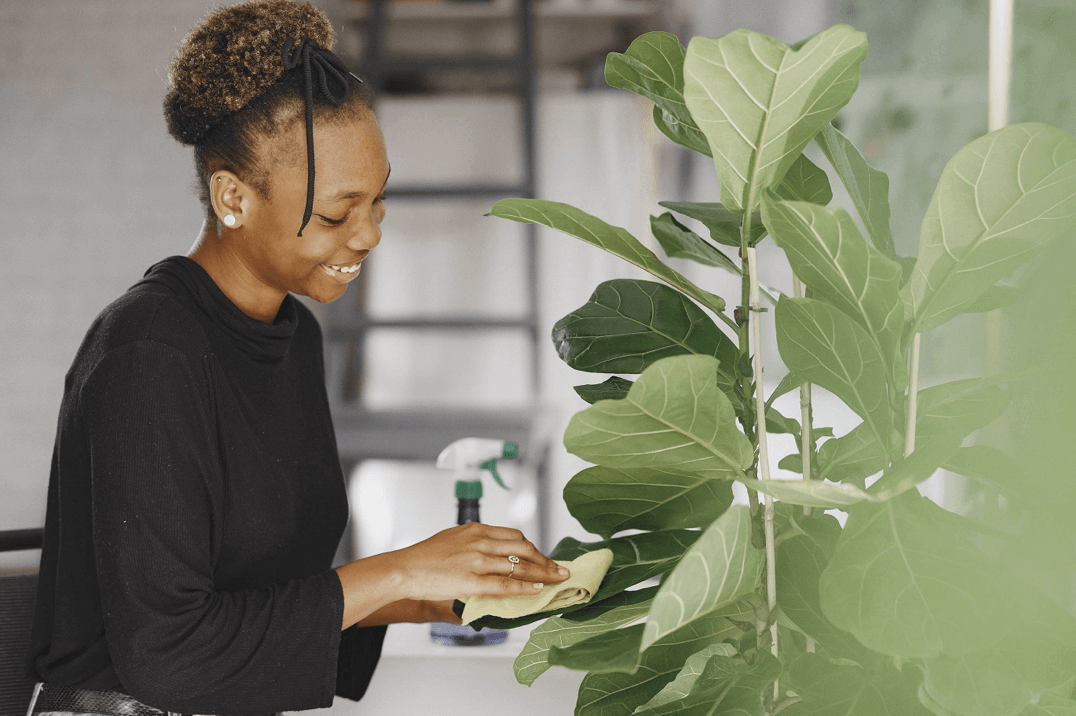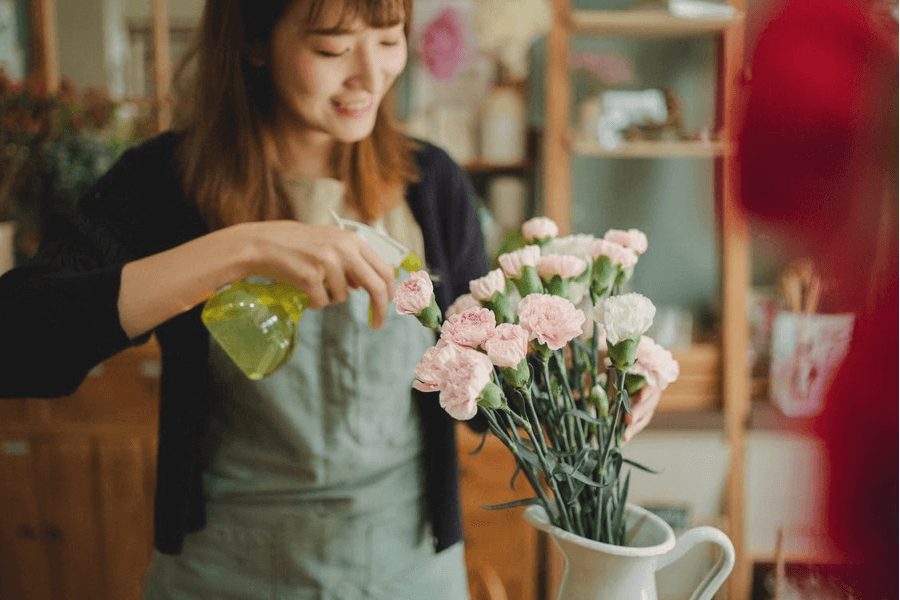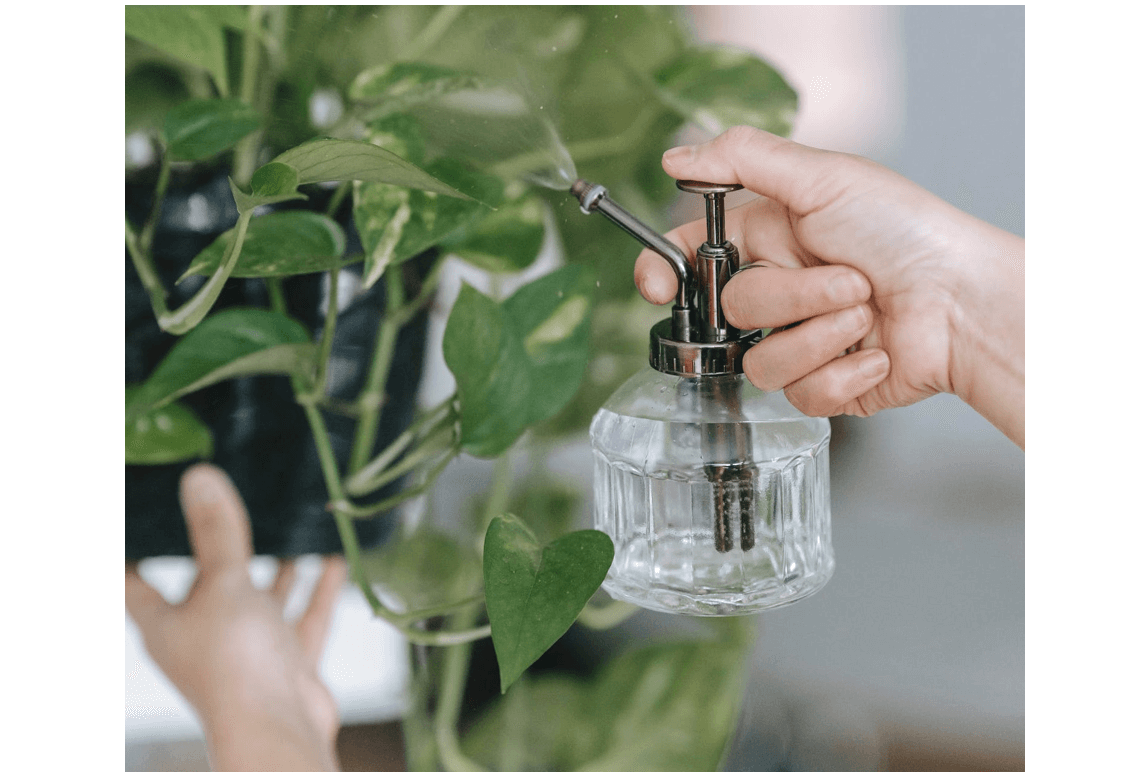How Do I Keep Bugs Off My Artificial Plants?
8th Feb 2022

Bug Prevention For Artificial Plants
Artificial plants are becoming increasingly popular because of their many benefits. This is why these plants are making their way into many homes and offices today. People are starting to prefer artificial plants due to their benefits over their natural counterparts. People may not only have allergies to some of these real plants, but could also be put off by the bugs which they attract too.
Real plants are much more prone to bugs infestation, which no one likes to deal with. A perfect alternative to help counteract these unwanted pests is to choose artificial plants instead. Today, these plants are also as beautiful as the natural ones (if not more so). You won't need to do a lot of maintenance with fake plants, such as watering the plant regularly.
However, you should note that fake plants can also be tricky to maintain, especially when they become dusty and dirty. In such scenarios, artificial plants may even start to attract bugs. In these cases, there are ways in which you can keep bugs off your artificial plant and leave them looking clean all the time. Read on for some handy tips.
Cleaning Fake Plants
The first step to keeping bugs off your artificial plant is by ensuring that you keep the plants clean all the time. But how do you keep artificial plants and artificial flowers clean? Here are out top tips for cleaning fake plants:
Choose the Right Plant
The first thing is to ensure that you select the right fake plant if you want to be able to keep it clean all the time. There are generally two types of fake plants: fabric plants and plastic plants. When buying fake plants, one of the things you should think about is how easy the plant will be to keep clean, as well as the plant’s cleaning potential.
Fabrics like silk and polyester are generally gorgeous and attractive, but these plants can have a higher tendency to attract dirt easily, so keeping them clean may be a daunting task. Silk plants also usually wear more easily compared to plastic plants.
If you're thinking of using fake indoor plants for decoration, it's always advisable to become familiar with what the real plant looks like so that you can easily buy a quality plant with a lot of similarities to the natural plant.
Cleaning Silk Plants
If you decide to get a fabric plant, it’s advisable that you know how to clean fake silk plants. You'd need to ensure that the plant does not get wet because this can cause severe damage. If your silk plant becomes dirty, the best thing is to place it in a bag and pour enough salt to cover the unclean areas of the plant.
Shake the plant thoroughly to allow the salt to stick to the surface of the plant. Remove the plant and leave it for at least an hour before you use a vacuum to remove the salt particles from the plant's leaves. For this, you may need to use a nylon pantyhose to cover the vacuum attachment so the leaves and petals do not get sucked up. This will also allow you to remove debris and other dirt particles from the plant leaves.
Cleaning Plastic Plants
It's also important to know how to clean plastic plants before you buy one. You can simply do this with just water, even without separating the plant from its container. However, if you don’t want to wet the container or base, you might want to consider covering it with a plastic bag and using a rubber band to secure its loose ends.
Fill a bucket or laundry sink with warm water, and add a mild detergent or dishwashing soap if there’s a lot of dirt present on the plant. You can then place the plant foliage in the water upside down and move it around to remove dirt and debris. For stubborn build-up on the plant, you may need to scrub the plant with a piece of cloth. The next thing is to rinse the plant under running water, and you’re all set. Leave the plant outside to dry. To give it an extra shine you can utilise a little olive oil to polish the plant.
Keeping Your Artificial Plants Bug-Free

Now that you know how to keep your artificial plants clean, you’ll also need to know how to keep bugs away. Bugs love plants, and they can be difficult to handle. Today, there are so many chemicals that you can use to keep these bugs away, but one thing to note is that these chemicals may also be toxic and harmful to children and pets.
This is why we’ve come up with some environmentally friendly methods that don't require the use of toxic chemicals to prevent these insects from harming your artificial plants.
Physical Bug Prevention Methods
One of the easiest ways to keep bugs from damaging your indoor plants is by using physical bug prevention methods, and there are many ways you can achieve this.
Here are some of the methods you might want to try out:
Sticky Traps
Spiders use this to trap insects and their prey, and today, there are several sticky traps that you can buy to trap bugs and prevent them from destroying your artificial plants. These sticky traps are non-toxic and inexpensive, and can also be used to prevent bug infestations.
It’s important to note that these traps come in different designs, and you can either place them in strategic positions or hang them nearby. Regardless of how you place them, you’ll want to ensure that you the traps are close enough to be effective. These traps are also good for flying bugs, like aphids, fungus gnats, or whiteflies.
Soil Toppers
In most cases, these bugs prefer to build their own nest, and they mostly do this close to plants. One way to prevent this is by placing a barrier over soil surfaces. You can either mix cinnamon or use sand soil on top layers. However, the most commonly used soil toppers are microscopic fossilised sea critters. This is an expensive option, so a cheaper alternative to try out is diatomaceous earth. This relatively more affordable powder can also get the job done effectively. Soil toppers are non-toxic, and they won’t harm you, your kids, or your pets. Therefore, you shouldn’t hesitate to use this option to keep bugs away.
Move The Plant
This is another option you might want to consider trying, even though it’s not a permanent solution to keep bugs away. However, moving the plant to a different location will buy you time to get a long-lasting solution. You can place the plant on an elevated stand to keep ants and other crawling insects away, but only temporarily.
DIY Bug Sprays

As mentioned earlier, there are several chemicals that you can use to keep bugs away, and some of these chemicals come in the form of sprays. However, these chemicals are toxic, even though they are effective. If you still want to use sprays to keep these bugs away, you might want to consider a few DIY bug spray recipes to use.
Below are some of the recipes that you can try out:
Soap and Water
The first recipe you should consider trying out is a mixture of soap and water. For this, you only need to make a dilution of liquid soap in a spray bottle and add water. This is the easiest DIY bug spray recipe to make, and what’s certain is that you’ll like the results you’d get.
For this, you only need a tablespoon of liquid soap in the spray bottle and enough water to fill the bottle. You can also use the spray bottle for other home cleaning chores!
Essential Oils
The next DIY bug spray you might want to consider trying is a combination of essential oils like lavender, clove, mint, and orange oils. One fantastic thing about essential oils is that they have a pleasant smell, in addition to their ability to act as insect repellent.
Another thing to note about using essential oils is that it won’t work if there’s already an infestation. The most effective essential oil that you might want to consider using is lavender oil, which acts as an excellent repellent, and works effectively when deterring ants.
Non-Essential Oils
Another choice that you may want to consider trying out is using non-essential oils like cottonseed, onion, and garlic oils. However, this strategy is only reasonably effective, and they can also degrade your plants over time.
Neem Oil
The last DIY recipe that you should consider trying is neem oil, but you might not like the smell that comes from the seeds of neem trees. However, neem oil is more effective than the other methods we have mentioned above. This option also works for a wide range of insects, and it can be used to repel ants, spiders, and even flying bugs.
Comprehensive Solution
If you're still unsure about which option to use, then you may want to consider trying all the DIY sprays that we have mentioned above. Researchers have tried many different strategies and ingredients, and doing this might be the best strategy to keep bugs away because it will combine all the properties of the other recipes.
Here’s a recipe that contains all the ingredients mentioned above, and you might want to consider trying it:
- Garlic oil
- Mint oil
- Lavender oil
- Cottonseed oil
- Neem oil
- Vinegar
You can place a mixture containing these ingredients in a spray bottle and apply it to your plants.
Frequently Asked Questions
How Often Should You Clean Fake Plants?
Artificial plants collect dust like other surfaces, and you may need to include them in your cleaning routine. The reason to clean fake plants regularly is to prevent dust from accumulating, making it harder for you to clean in the long run. While it's essential that you clean your artificial plants regularly, a deep clean should be done twice a year.
How Do You Clean Silk Flowers?
Silk flowers generally require extra care because of their delicate nature and how they are constructed, which often involves the use of dyes. Therefore, cleaning these types of flowers will require that you apply some extra care because certain liquids may cause the colours to run.
However, you don’t have to use wet cleaning methods to clean these delicate plants. There are different dry-cleaning solutions that you can apply without causing damage to the plants. Examples of these dry-cleaning solutions that you should consider trying include salt or cornmeal, and you can be sure that they will effectively remove dust while ensuring that your artificial flowers stay clean.
Can Silk Plants Get Wet?
Not all silk flowers can get wet. For silk flowers that do get wet they may not lose their colours depending on the type and quality of silk flower. In general, foliage-silk plants are more durable, and they do not degrade or lose colour even when they are wet. The best thing is to opt for a cleaning method that won’t get your plant wet, and we have outlined several effective cleaning methods above.
Can You Put Fake Flowers in the Dishwasher?
The short answer is no. Never place your plants in the dishwasher!
How Do You Shine Artificial Plants?
Different silk plant cleaners are specifically designed to make it a lot easier to shine artificial plants. You can try one of these cleaners for your artificial plants. Another method that you might want to consider trying is hairspray, which also works like silk cleaners. However, with hairspray, you'll need to note that it has a higher tendency to make dirt and dust stick, which will only ruin the flower's appeal. This is why it is important to ensure the plant is very clean before trying this method.
Artificial Plants For The Win
Keeping bugs off fake plants is generally easier than trying to keep them off natural plants. And if you keep your fake plants clean, bugs will not be a significant problem. Choosing to get fake plants may just be the best way to get the more accessible version of those plants you’ve always wanted but don’t have the time to take care of. To explore different types of artificial plants, check out the options we have available.

